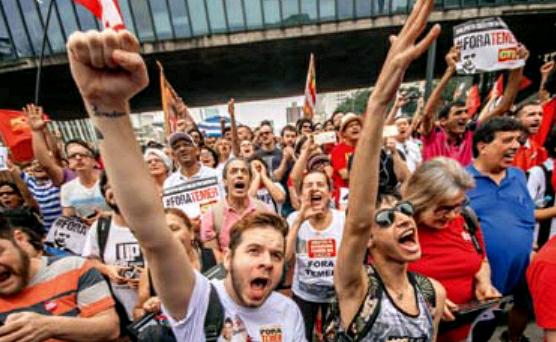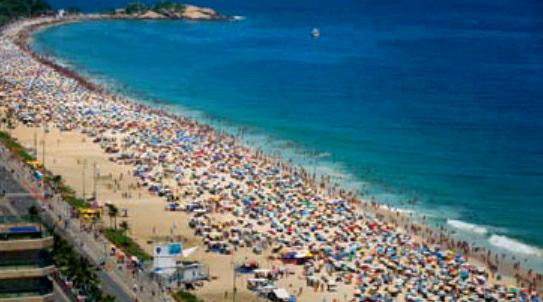Challenges for Brazil’s Economy
2016-10-25byZhouZhiwei
by+Zhou+Zhiwei
In recent years, Brazils GDP has fluctuated dramatically from a growth rate of negative 0.24 percent in 2009 in the wake of the financial crisis to a positive 7.57 percent the following year and, most recently, back to a stunning negative 3.8 percent in 2015.
Manufacturing Pains
Brazil is rich in natural resources, especially iron ore and oil. Its gross reserve of iron accounts for 9.8 percent of the global total, ranking fifth, and its output ranks second globally. The countrys oil reserves trail only Venezuela on the South American continent and serve as a key resource of revenues. Vale, the worlds largest iron ore exporter, facilitates 80 percent of Brazils iron ore output. The company has been called “the engine of the Amazon” and“gem on the crown of Brazil.”
Iron ore and oil account for heavy proportions in Brazils exports – 16.3 percent and 8 percent respectively. This export structure is easily impacted by the world economy.
Iron ore, for example, is the most important commodity China imports from Brazil. In 2009 when China promoted a 4-trillionyuan bailout, the price of iron ore rocketed, hitting US$187 per ton. But soon after 2011, the price dropped dramatically and currently sits at US$52 per ton. In recent years, Chinas decreasing demand for iron ore has impacted Brazils economy heavily.
Brazil is one of the least economically open countries in Latin America. Over the last decade, the countrys economy has greatly relied on the export of commodities, while manufacturing has become a smaller portion of the national economy, an abnormal phenomenon. Even as the government attempted to revive its manufacturing, Brazils industry grew at only half the rate of the GDP in the decade spanning 2003 to 2013. Without the mining industry, the rate would be even lower.
Welfare State
Brazil has developed one of the worlds most extensive social security systems, guaranteeing free medical care and education, robust welfare and good pensions. Brazilians enjoy benefits comparable to Scandinavia. For Brazilian retirees, the government pension accounts for 97 percent of their after-tax income, much higher than the global average of 69 percent according to the Organization for Economic Co-operation and Development (OECD). However, as Brazils elderly population grows, the government feels major pressure. The welfare policy has damaged the flexibility of labor market, damaged the healing ability of the economy and shortened the conversion period.
In order to get elected, the left-wing government promised poor people better living standards, a goal that resulted in major public spending from the government. Former Brazilian President Lula da Silva implemented a “household allowance” welfare project that has benefited 50 million people. But after 12 years of the program, only 12 percent of beneficiaries have climbed to the middle class. Imbalanced income and uneven regional development have created a large gap between the poor and the rich. Slums can be found everywhere in cities.
A policy pegging the lowest incomes to inflation rate makes Brazilian income rise annually. Since 2003, the average pay level has risen 30 percent, but the productivity rate has remained at almost the same. When the prices of oil and iron ore fell because of the acute decrease in demand for primary products globally, the Brazilian government had no solution.
Corrupted State-owned Enterprises
Since 1990, Brazil has begun implementing a market economy but not thoroughly. Like Venezuela, Brazils two biggest resource exporters, Vale and Petrobras, are under governmental administration. Even when the two enterprises were publicly traded, the Brazilian government kept controlling equity. This nascent market economy has given way to oligopoly and weakened the competitiveness of the Brazilian economy in the 21st Century.
State-owned enterprises in Brazil always play the main role in domestic investment. Petrobras corruption scandal implicated many state-owned enterprises, so public investment almost came into a halt. Over the last three years, Brazils fixed capital formation dropped by 3 percent to 17 percent.
The economic slump led to turbulence in Brazils political environment, which deteriorated into a political crisis. Partisan rivalry failed to provide effective policies to respond to the eco- nomic crisis and even sometimes the economy lacked any management whatsoever. Given political and economic crises, international rating institutions have been bearish on the countrys economy, which had caused international capital to step back and dried up channels to feed Brazils need for capital. Although the country implemented the Growth Acceleration Program (PAC) and Stronger Brazil program, the high cost of investment and the countrys economic slowdown have lagged those plans.
Brazil is the fourth developing country to host the summer Olympics after Mexico, South Korea and China. Brazil still has many issues to solve, a normal situation for a developing nation. As the country experiences economic transformation, Brazil needs deeper-level reform and gradual removal of institutional barriers impeding economic and social development.